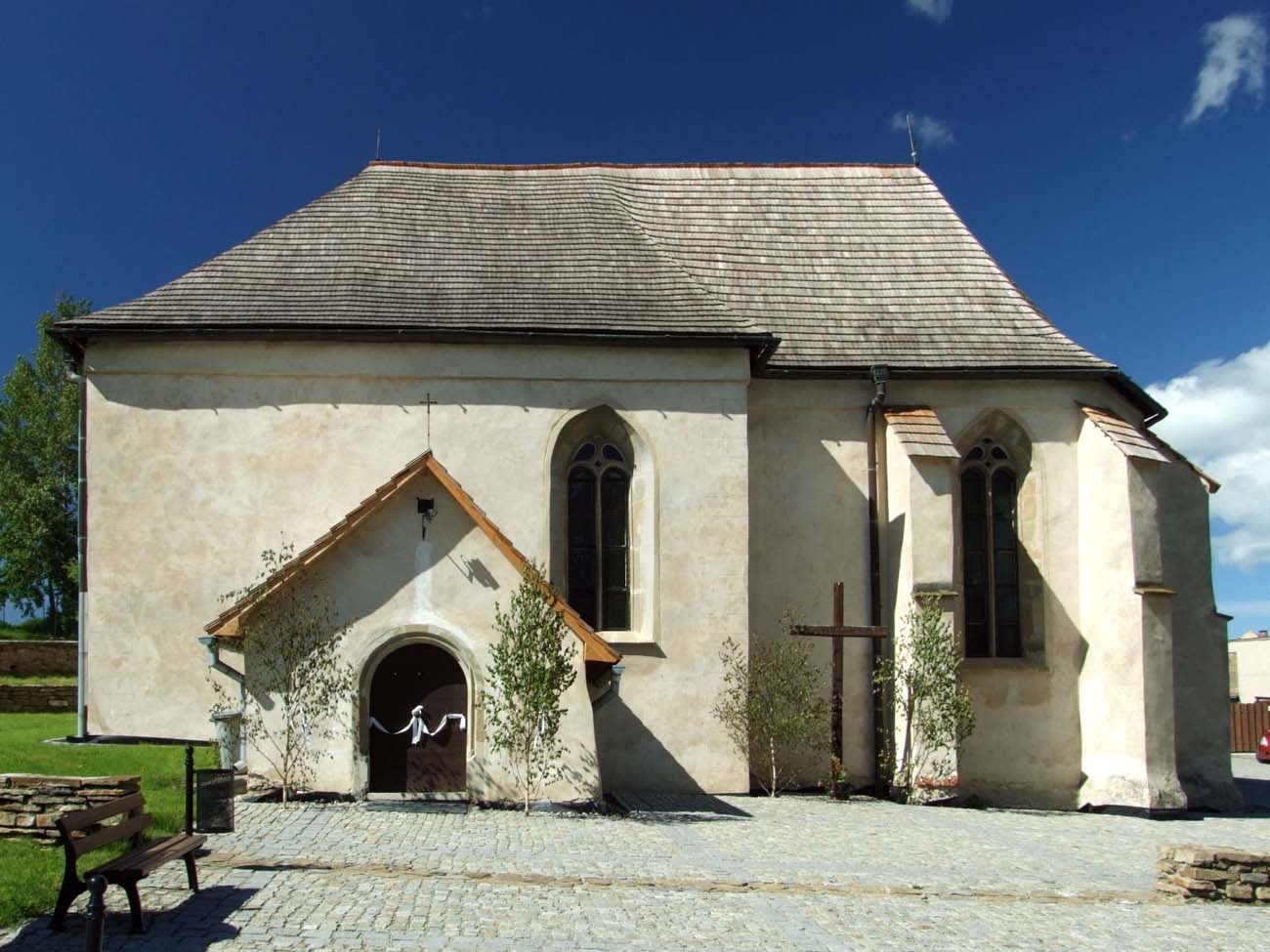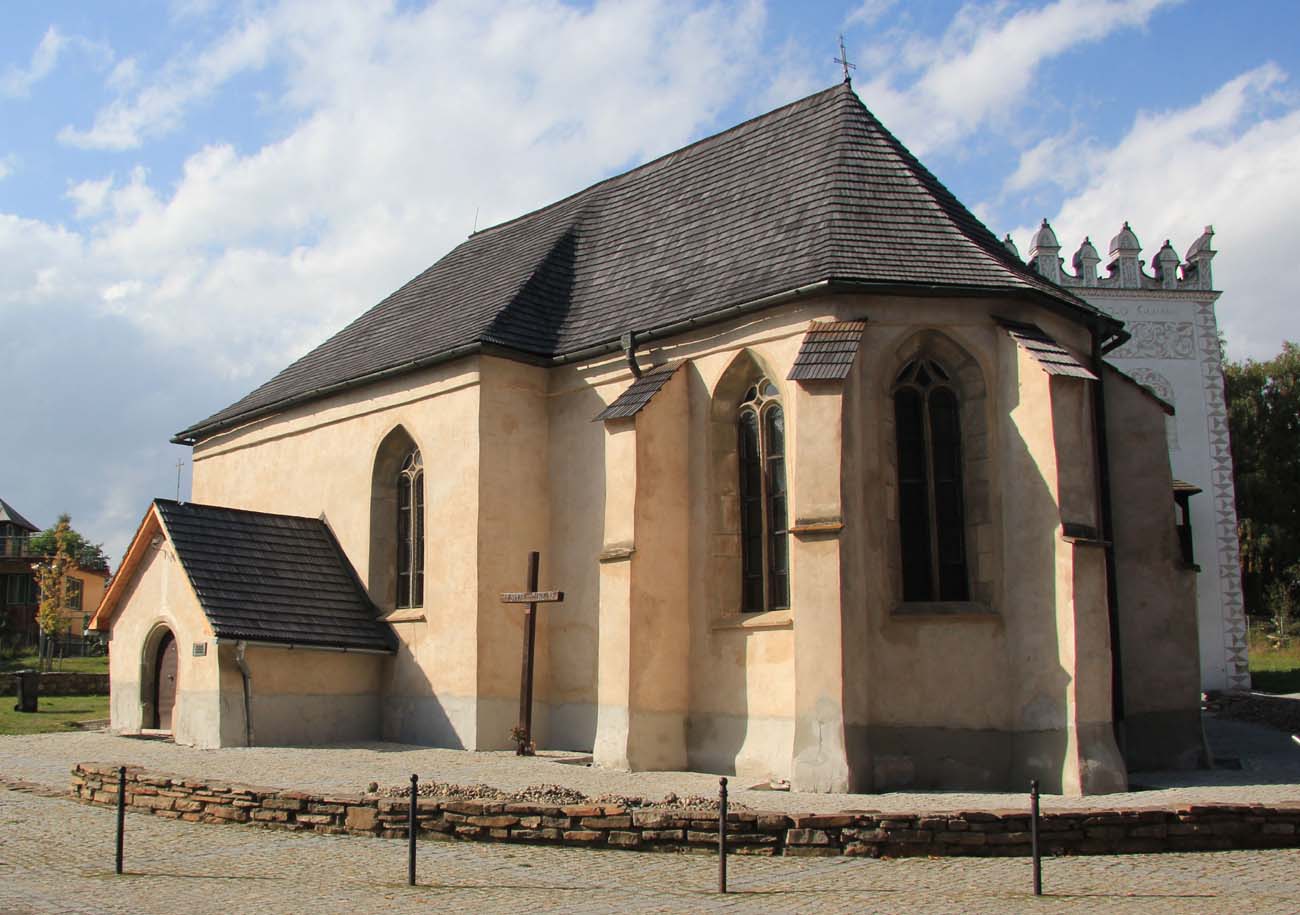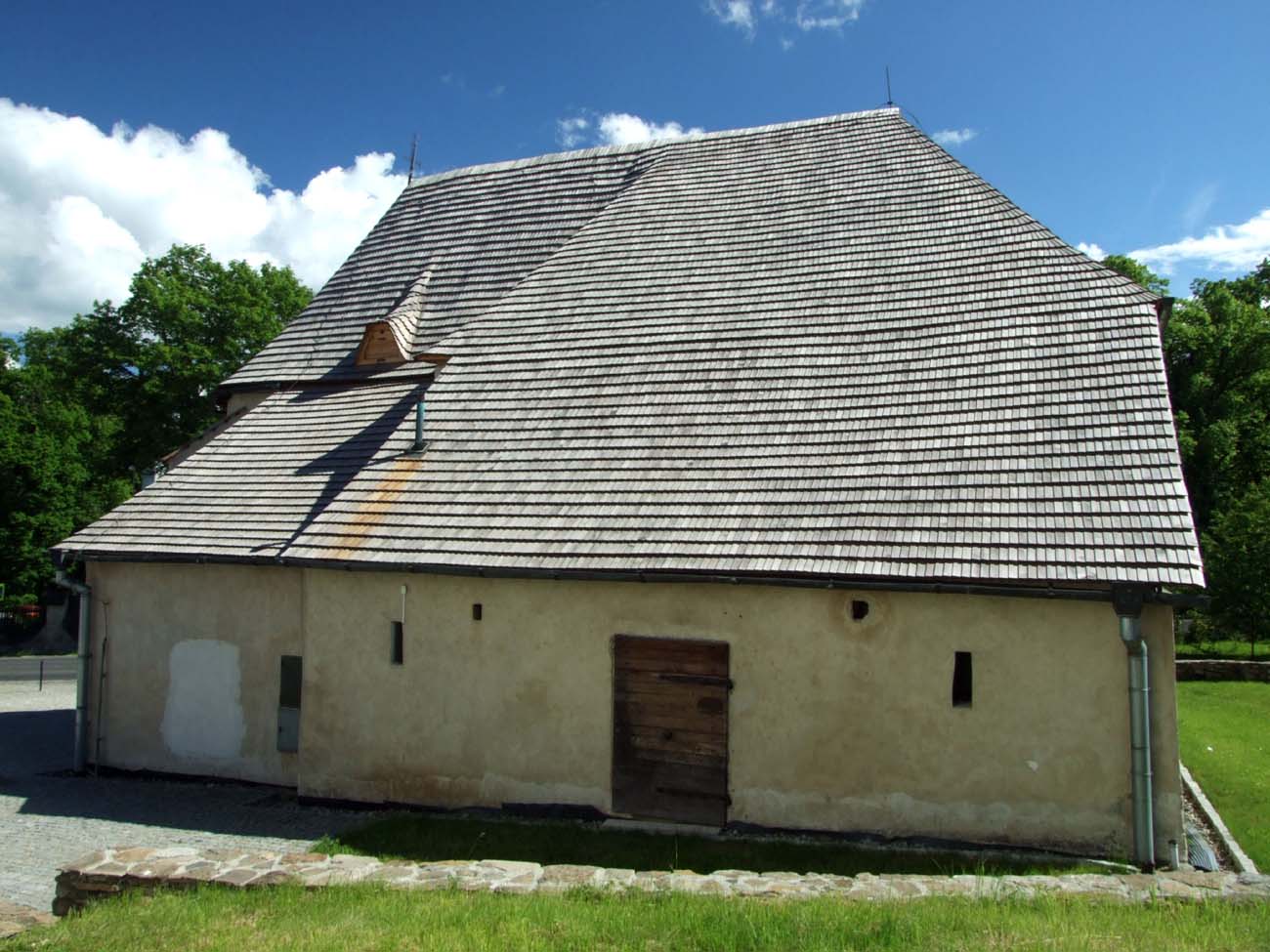History
The church was built in the second half, or perhaps at the end of the 15th century, although the village of Strážky was recorded in documents as early as 1251. At the turn of the 15th and 16th centuries, a porch was added, and then the interior was decorated with late-Gothic wall paintings. At the end of the 16th century, after the building was taken by Protestants, the western entrance to the nave was bricked up and the interior was filled with a timber gallery. Medieval polychromes were also probably painted over at that time. In the first half of the 17th century, a rectangular annex was added to the northern wall of the nave. It served as a morgue, warehouse, and in the event of an emergency it also had a defensive function, as evidenced by narrow slits. After minor adjustments in the 18th and 19th centuries, a major renovation was carried out in the 1970s. The static problems of the building and the dampness of its walls required it. In 1986, research on late-gothic wall paintings was carried out, and their renewal took place in the early 1990s.
Architecture
The church was built in the Poprad valley, in the vicinity of a medieval small stronghold and a defensive tower, later used as a belfry. The church was built as a small, aisleless building with a chancel, narrower than the nave, and a sacristy on the north side. In the late Middle Ages, a porch was added in front of the southern entrance, moreover, there was still an entrance from the west facade. Inside, both the nave, the chancel and the sacristy were covered with cross-rib vaults, although only the choir was reinforced with buttresses from the outside. The church was lit by large pointed windows filled with traceries, pierced only from the east and south, so where it was possible to get the most sunlight.
Current state
The structure of the church has practically been preserved in its original late Gothic form. Along with wall paintings and architectural elements of the interior (portals, pastophorium, window traceries) and rib vaults, it is a valuable example of late Gothic art in Slovakia. Among the medieval furnishings in the church, there are three late gothic altars from the first quarter of the 16th century. The oldest altar from the mid-15th century was moved to the museum in Bratislava.
bibliography:
Podolinský Š., Románske kostoly, Bratislava 2009.
Slovensko. Ilustrovaná encyklopédia pamiatok, red. P.Kresánek, Bratislava 2020.




